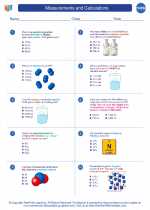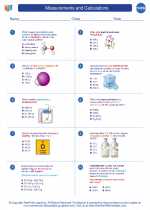Gay-Lussac's Law
Gay-Lussac's Law, also known as the pressure-temperature law, is one of the gas laws discovered by the French chemist Joseph Louis Gay-Lussac in 1802. This law describes the relationship between the pressure and temperature of a gas at constant volume. The law can be stated as:
Pf / Tf = Pi / Ti
Where Pf and Tf are the final pressure and temperature of the gas, and Pi and Ti are the initial pressure and temperature of the gas, respectively.
Explanation of Gay-Lussac's Law
Gay-Lussac's Law states that the pressure of a given amount of gas held at constant volume is directly proportional to the Kelvin temperature. This means that as the temperature of a gas increases, so does its pressure, and vice versa. Mathematically, this can be expressed as P / T = k, where P is the pressure, T is the temperature in Kelvin, and k is a constant.
Application of Gay-Lussac's Law
This law is particularly important in understanding the behavior of gases in various real-world scenarios. For instance, it helps in predicting how changes in temperature will affect the pressure of a gas in a sealed container, such as a gas cylinder or a balloon. It also forms the basis for the operation of many heat engines and refrigeration systems.
Study Guide for Gay-Lussac's Law
- Understand the mathematical relationship between pressure and temperature as described by the law.
- Learn to convert temperature to Kelvin scale, which is essential for applying the law.
- Practice solving numerical problems involving Gay-Lussac's Law to reinforce your understanding of the concept.
- Explore real-world examples and applications of the law to appreciate its significance in practical situations.
- Compare and contrast Gay-Lussac's Law with other gas laws, such as Boyle's Law and Charles's Law, to grasp the unique aspects of each law.
By mastering Gay-Lussac's Law, you will enhance your understanding of the behavior of gases and be better equipped to solve problems related to gas pressure and temperature relationships.
.◂Chemistry Worksheets and Study Guides High School. Measurements and Calculations

 Worksheet/Answer key
Worksheet/Answer key
 Worksheet/Answer key
Worksheet/Answer key
